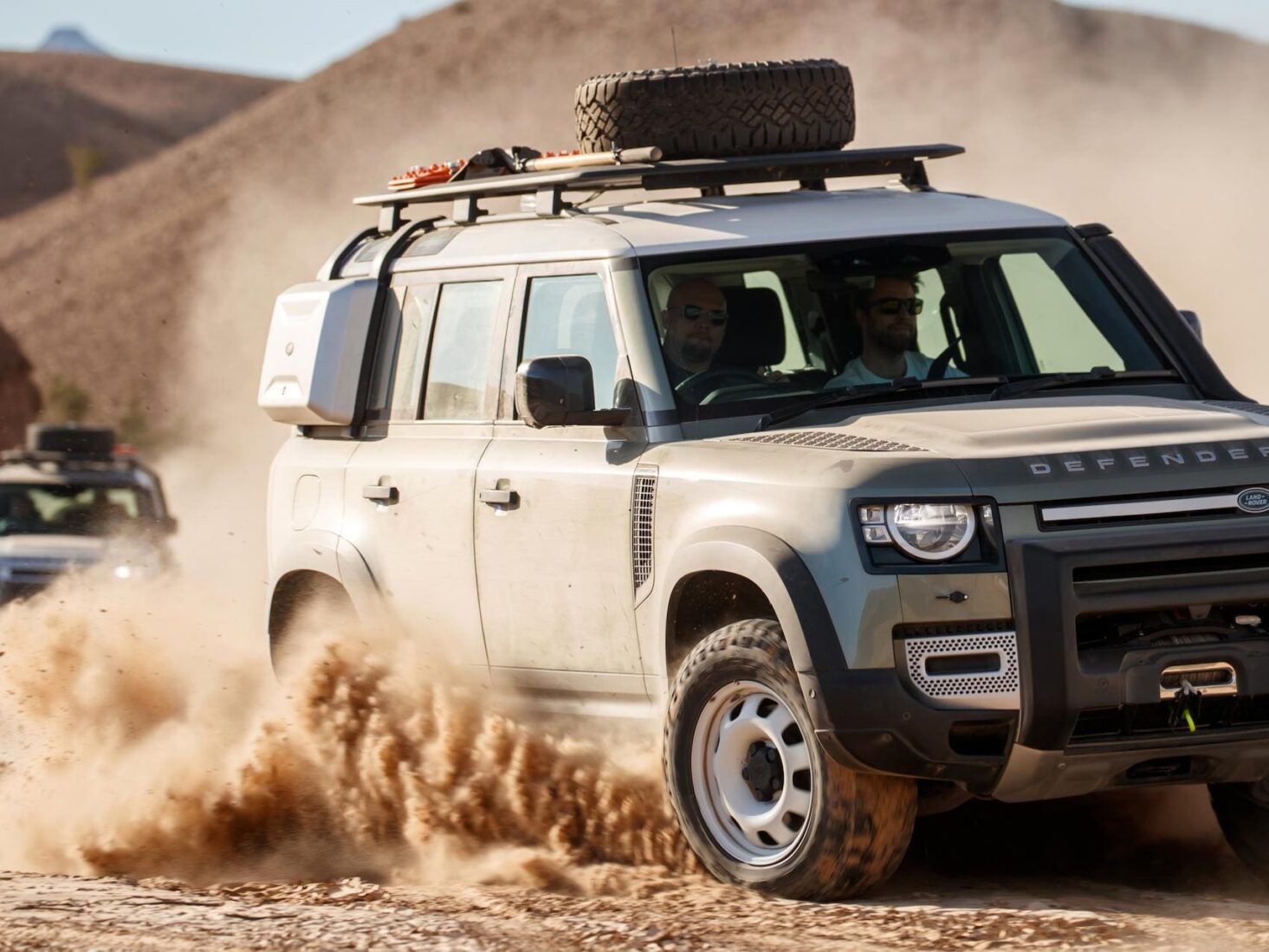
The new 2020 Land Rover Defender: exclusive review
Four years since production of the old model came to an end, we travel to a remote corner of Africa to get hands-on with the most important car in Land Rover's 72-year history
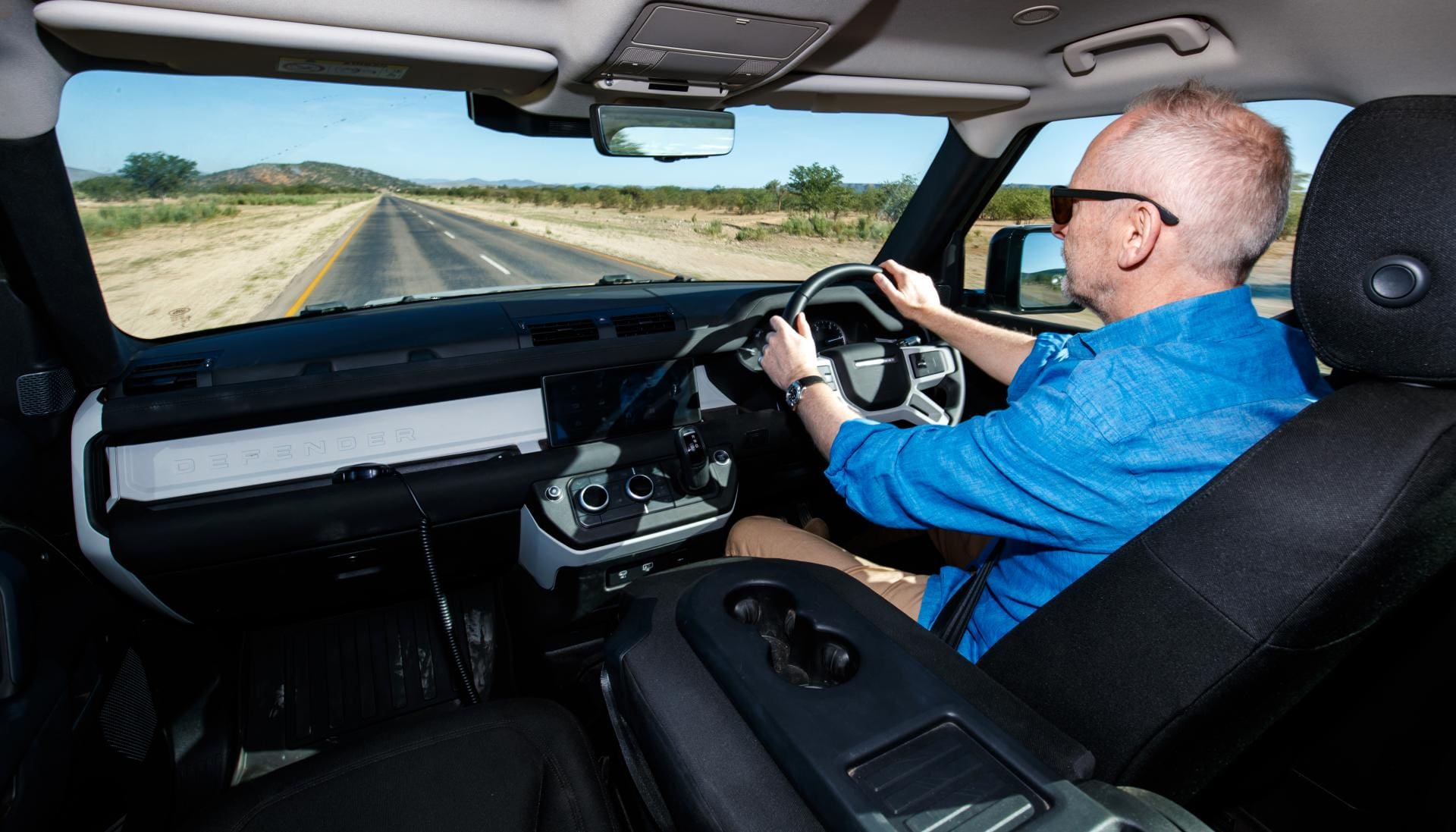
The long wait is over. The new Land Rover Defender has finally arrived and, I’m happy to report, it’s better than ever. Packed with advanced technology and a catalogue of must-have accessories, this icon re-born is the most capable off-road vehicle on the planet.
I know this because I enjoyed three days driving this incredible machine across the wilds of Namibia – the remote north-west corner of the country, specifically, known by local tribespeople as the land that God built in anger.
It was just the spot for Land Rover to prove its all-new model as rugged and tough as claimed. The magical landscape of Kaokoland is one of the last true wildernesses, a vast area of unchartered places and dramatic scenery on an epic scale.
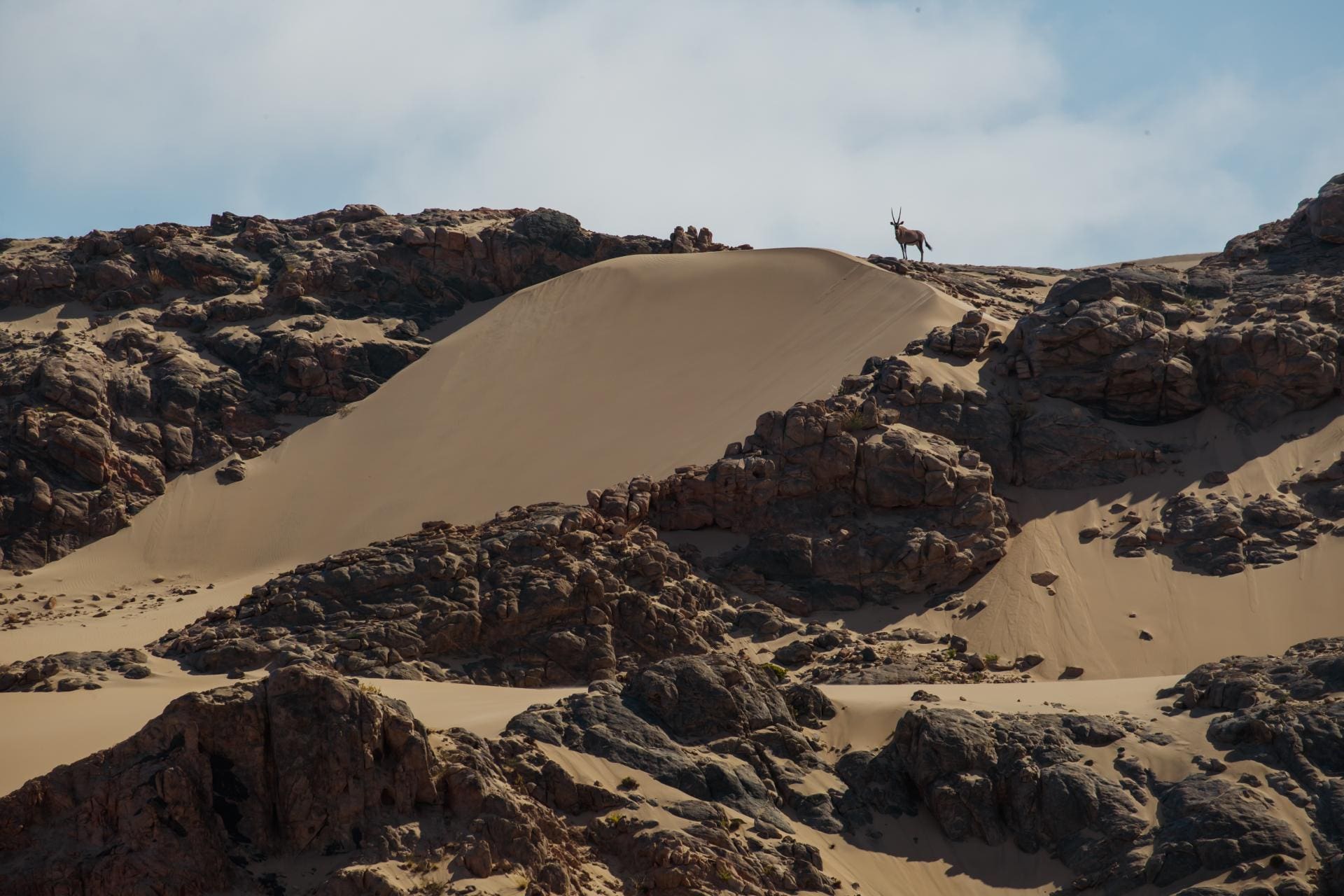
The shock of the new won’t please old-school Land Rover enthusiasts, but if the Defender name was going to live up to expectations in the 21st century, it could no longer be based on an antiquated 1948 design.
As lovable as the original Defender was, this latest model had to be a break from the past, loaded with cutting-edge features and ready for anything. The famous boxy design also had to go – the new Defender needed to be something very special indeed.
It’s almost four years since production of the old model came to a tearful end. Now, Land Rover has brought me to this remote corner of Africa for the world-first media drive of the most important car in the company’s 72-year history.
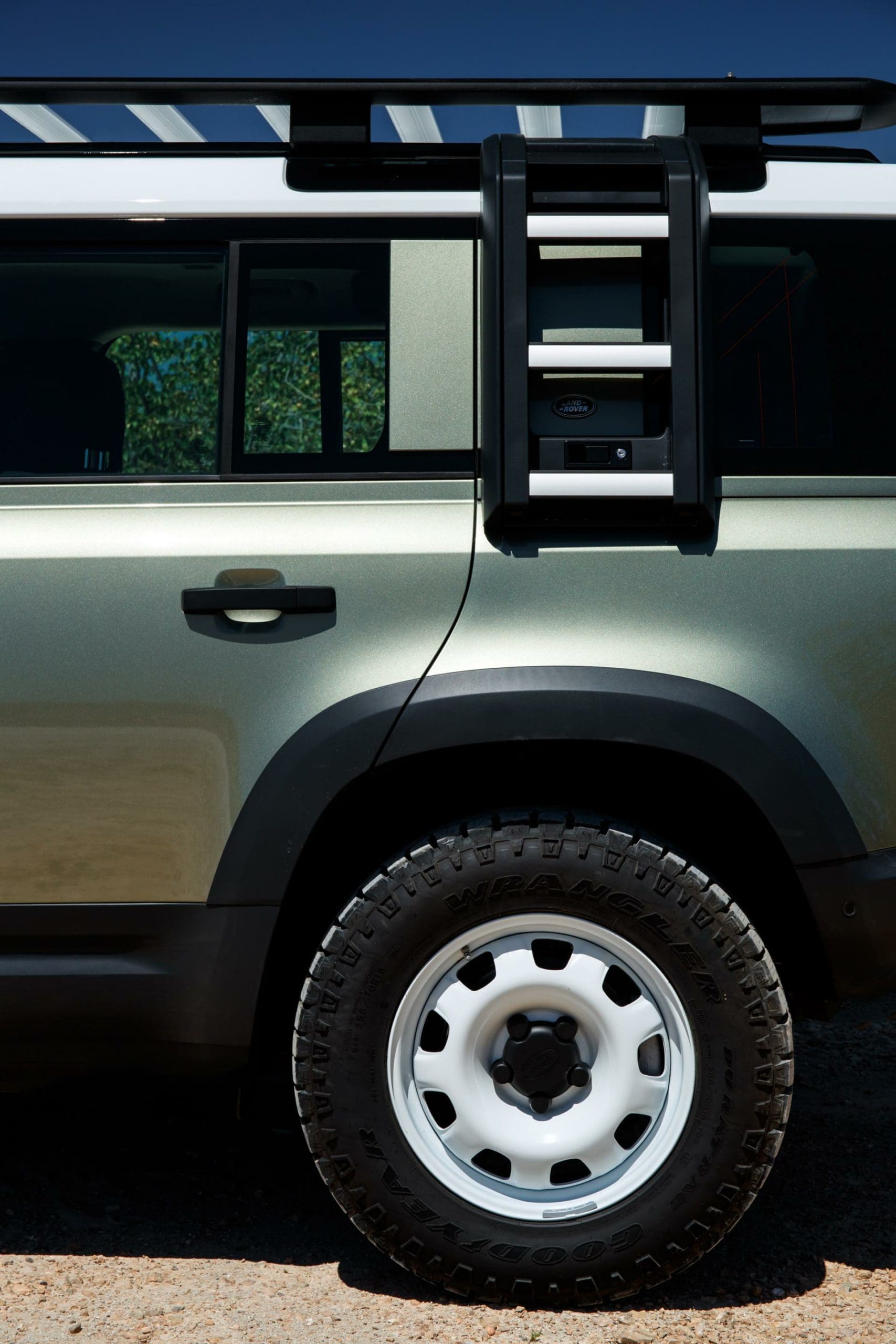
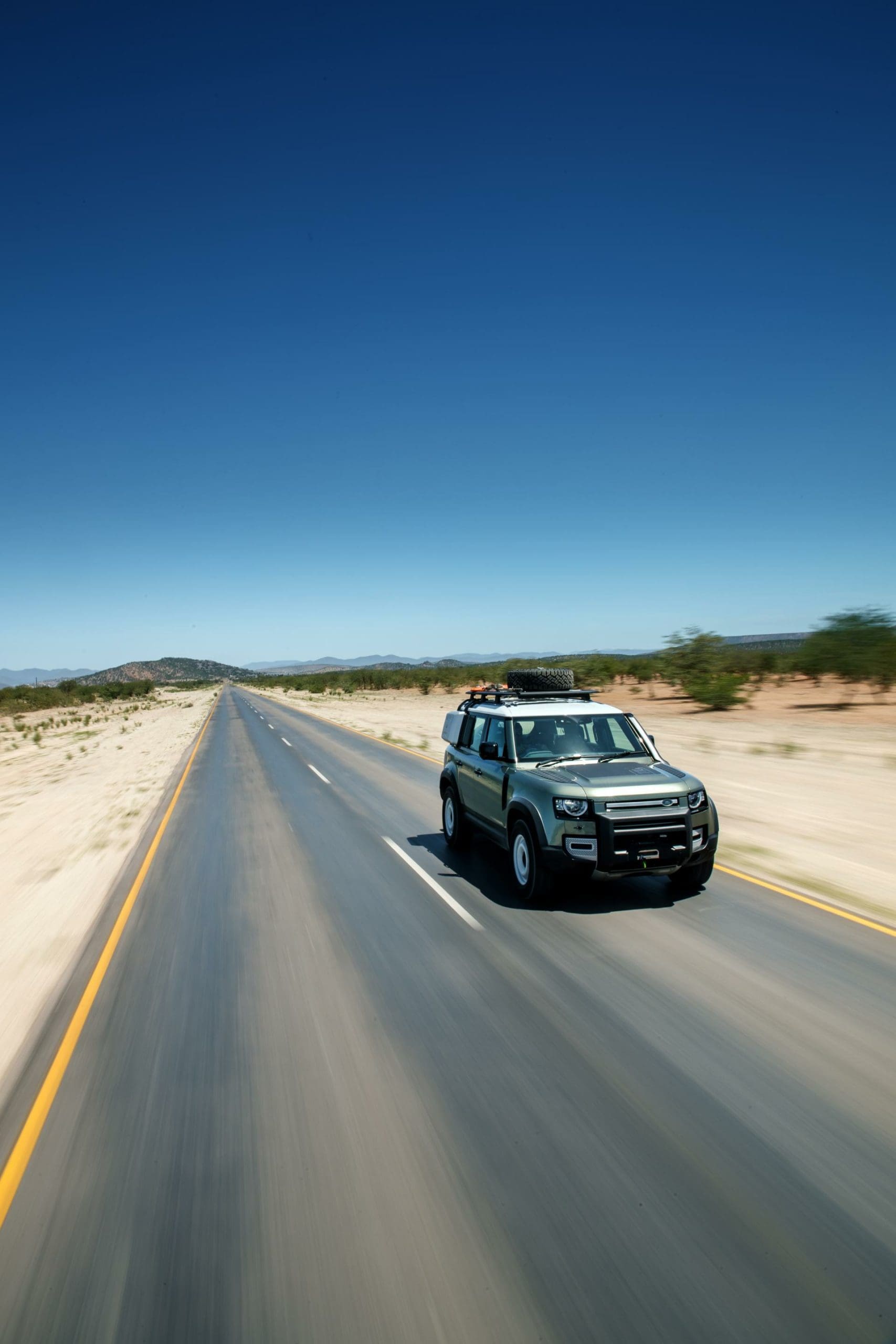
The 430-mile, three-day trek across Namibia’s own Outback will include towering sand dunes, parched river beds and almost a complete lack of Tarmac. It’s home to the Himba people, dressed in goatskins, horn necklaces and mesmerised by our presence.
This is one of the most extreme places on the planet and I’m hunkered down in a remote campsite on Van Zyl’s Pass. Notoriously dangerous for any form of traffic, the car wrecks down the ravine hint at the dangers ahead.
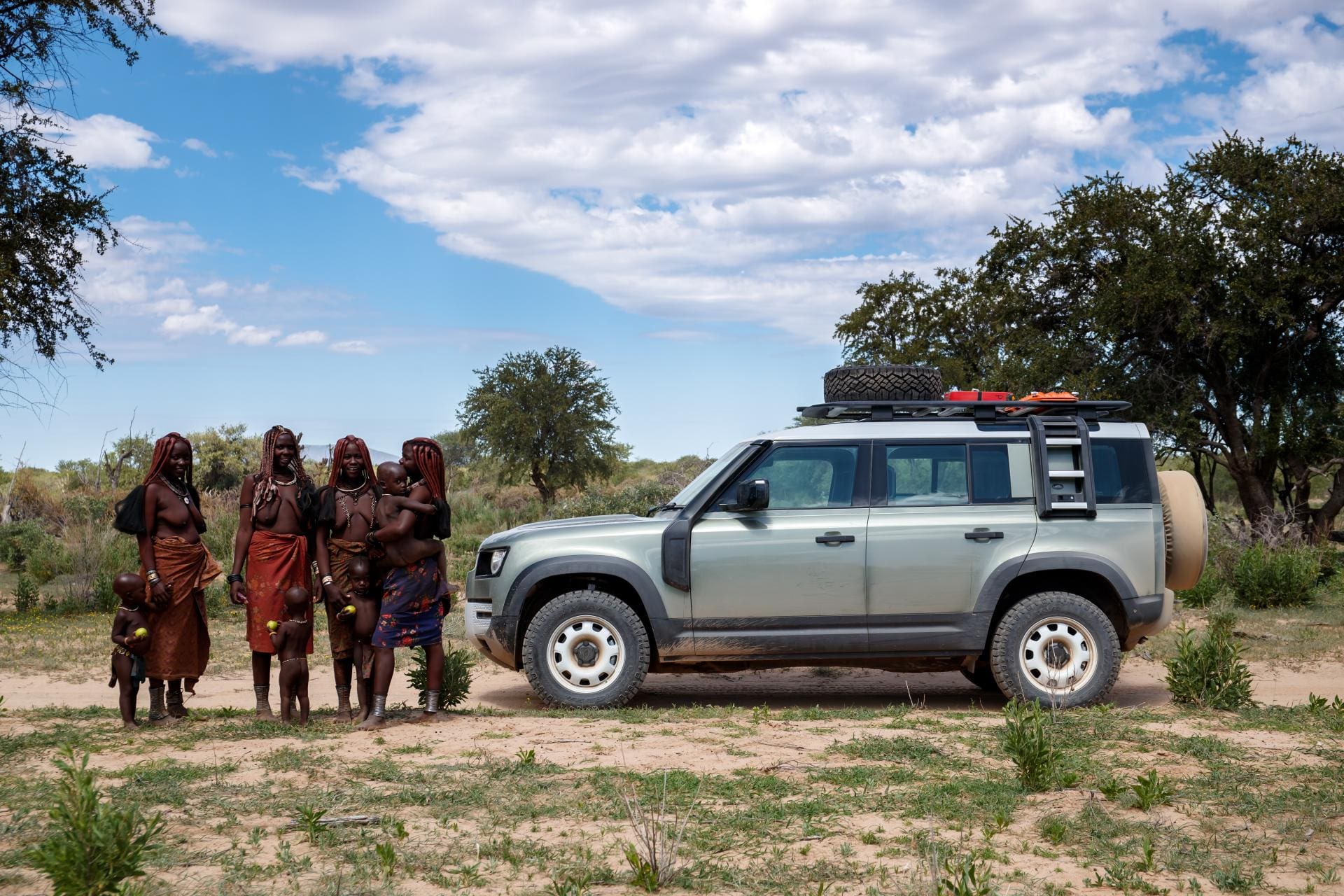

The ‘roads’ on the map are mostly rocky tracks, originally cleared for moving livestock centuries ago. Thankfully, the new Defender has the latest Terrain Response 2 system, with configurable settings to overcome whatever we throw at it.
Terrain Response is available in other Land Rovers but this version has a Wade programme for splashing across rivers, with a 900mm safety depth when a snorkel air intake is fitted – just what you need if you live near the River Severn. Sand, Rock Crawl, and Mud and Ruts modes take the strain out of anything else that gets in the way.
The system is operated via an all-new infotainment system that will eventually roll-out across the entire Land Rover range. Purists will say it takes the skill out of serious off-road work but combined with air suspension and 291mm of ground clearance, this Defender is proving unstoppable.
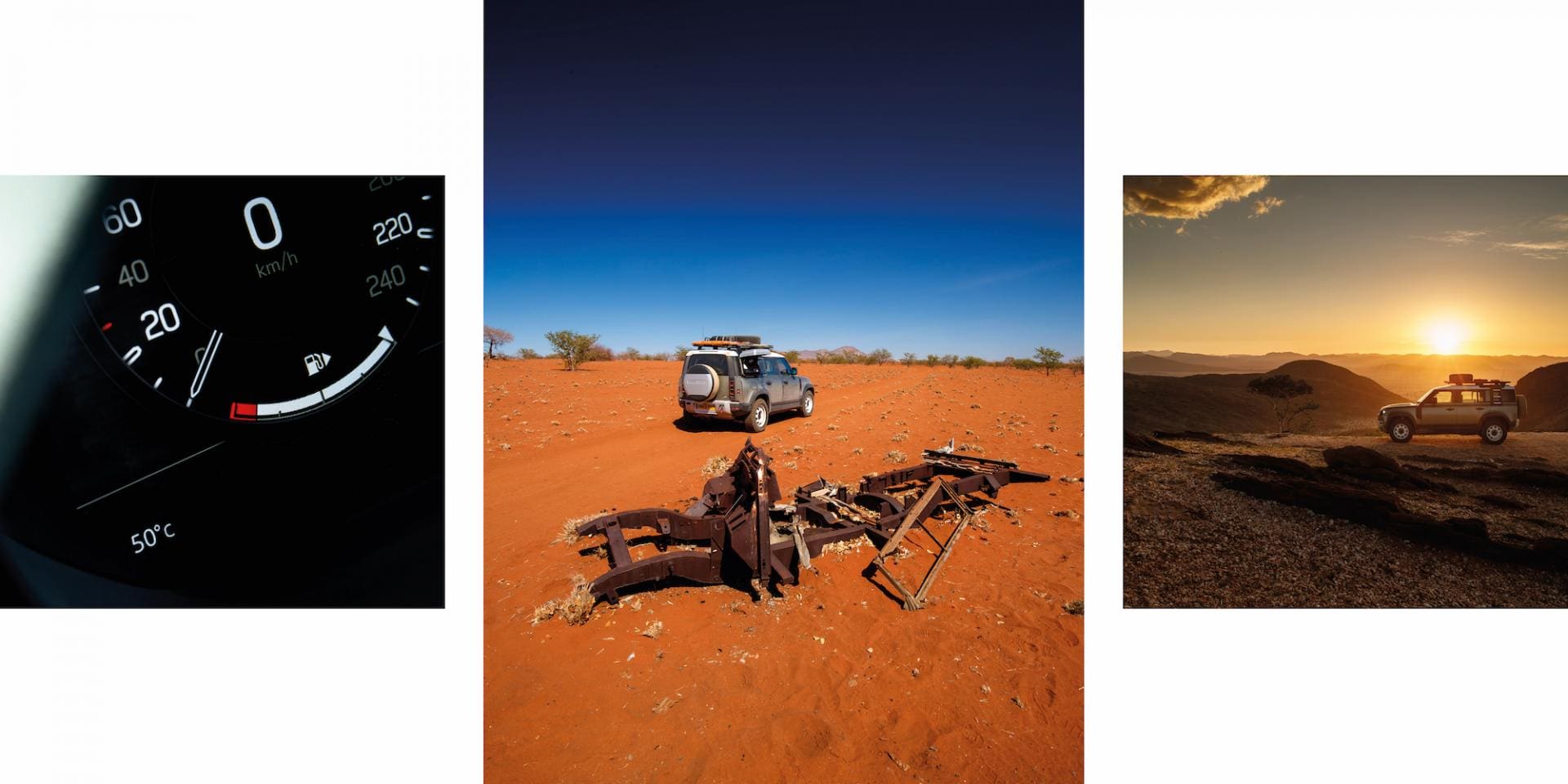
It’s light years ahead of the original Land Rover, of course. That was a classic design which launched a thousand expeditions and served both the military and farmers well. I’ve owned three and while enjoying all the associated idiosyncrasies, comfort and style were never top of the agenda.
However, the latest version is a thoroughly modern sports utility vehicle – although Land Rover insist that the new Defender isn’t a soft SUV but a bona fide off-roader. The technology is mind-boggling and puts dirt-busting rivals like the Toyota Land Cruiser and Jeep Wrangler to shame, especially on-road.
Clearsight is part of a three-dimensional camera system that not only allows you to see ‘through’ the bonnet to the terrain below but also focusses lenses on the side of the front wheels where sharp rocks are lying in wait. Such technology ensures exploring this remote corner of Namibia is almost effortless.
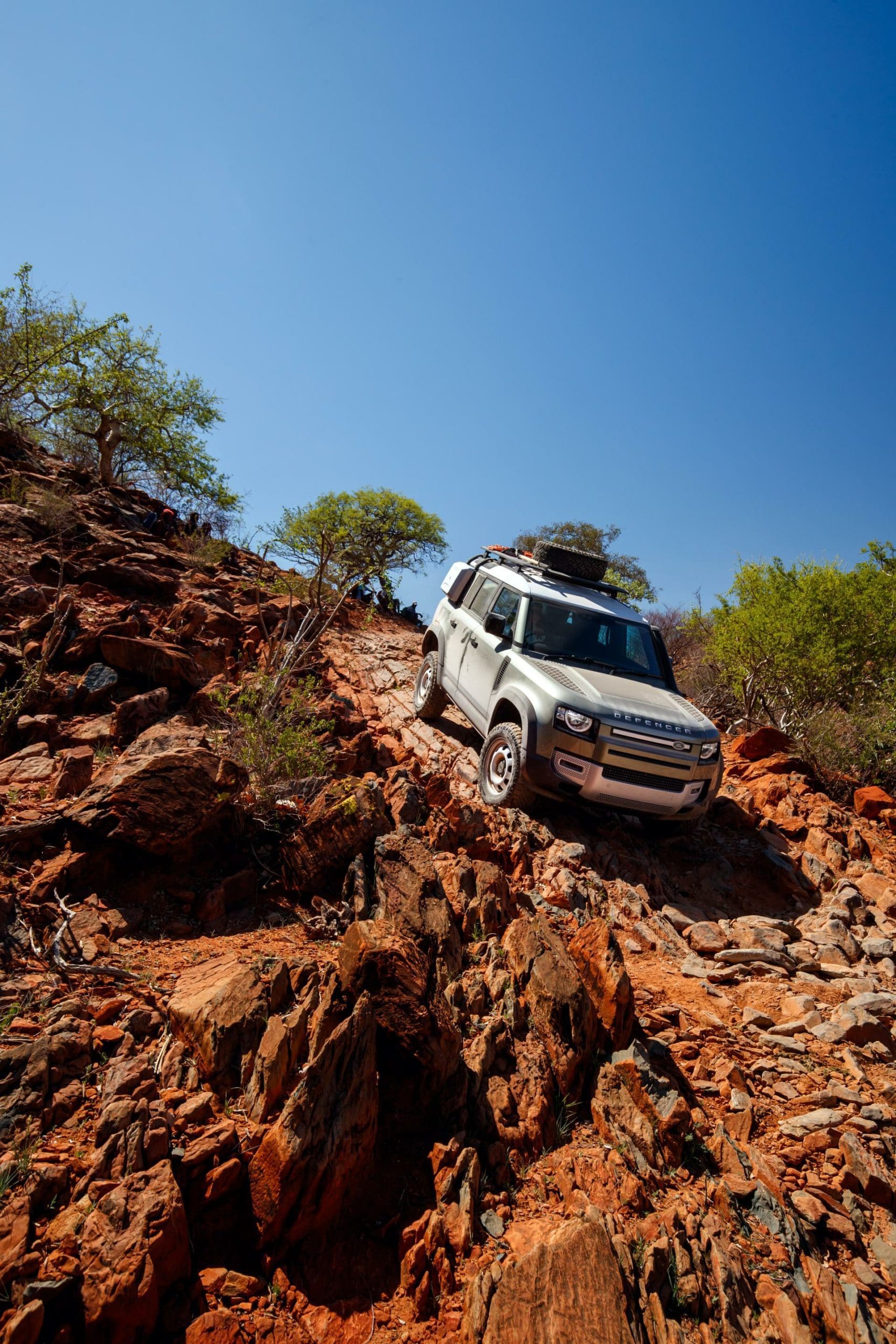
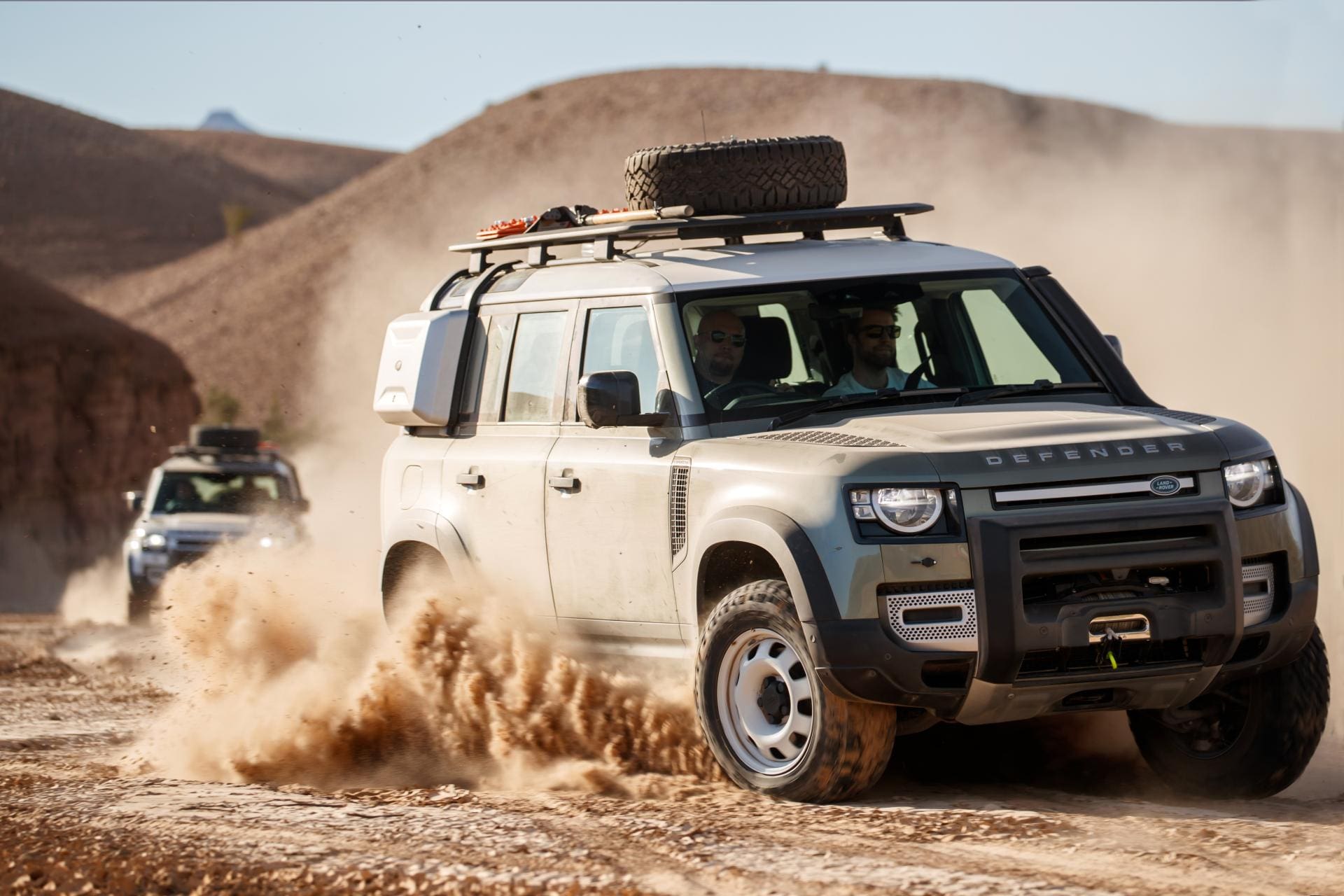
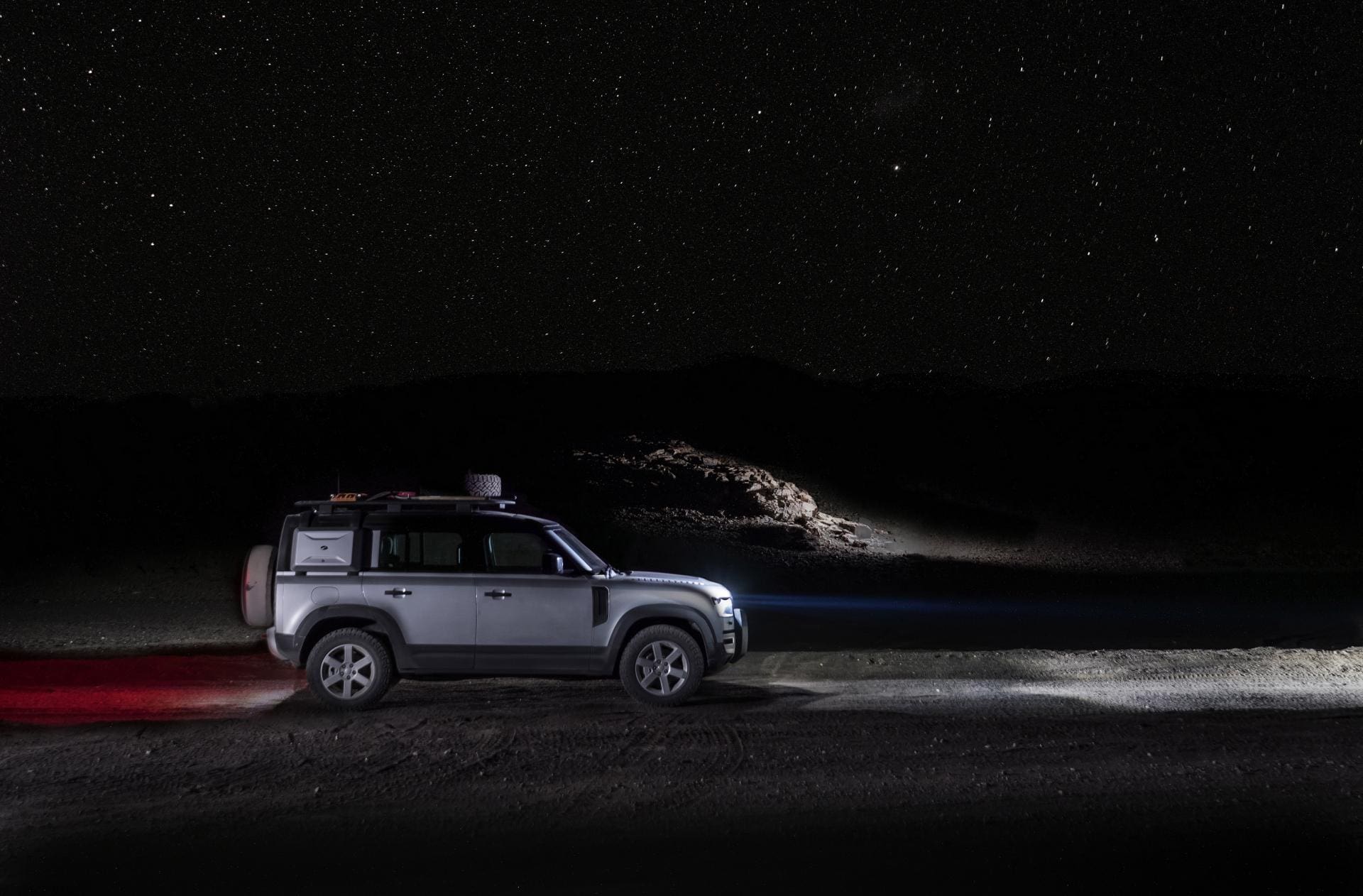
Inside, the 110 can be configured for five, six or eight people – the famous jump seat between the front seats making a welcome return, except this one folds forward when not in use to offer twin cupholders and storage space.
And whether your home is in Chelsea or the Cotswolds, Land Rover believes there’s a Defender to suit. Explorer, Adventure, Country or Urban Pack, the list of 170 lifestyle options could add thousands of pounds to the bill.
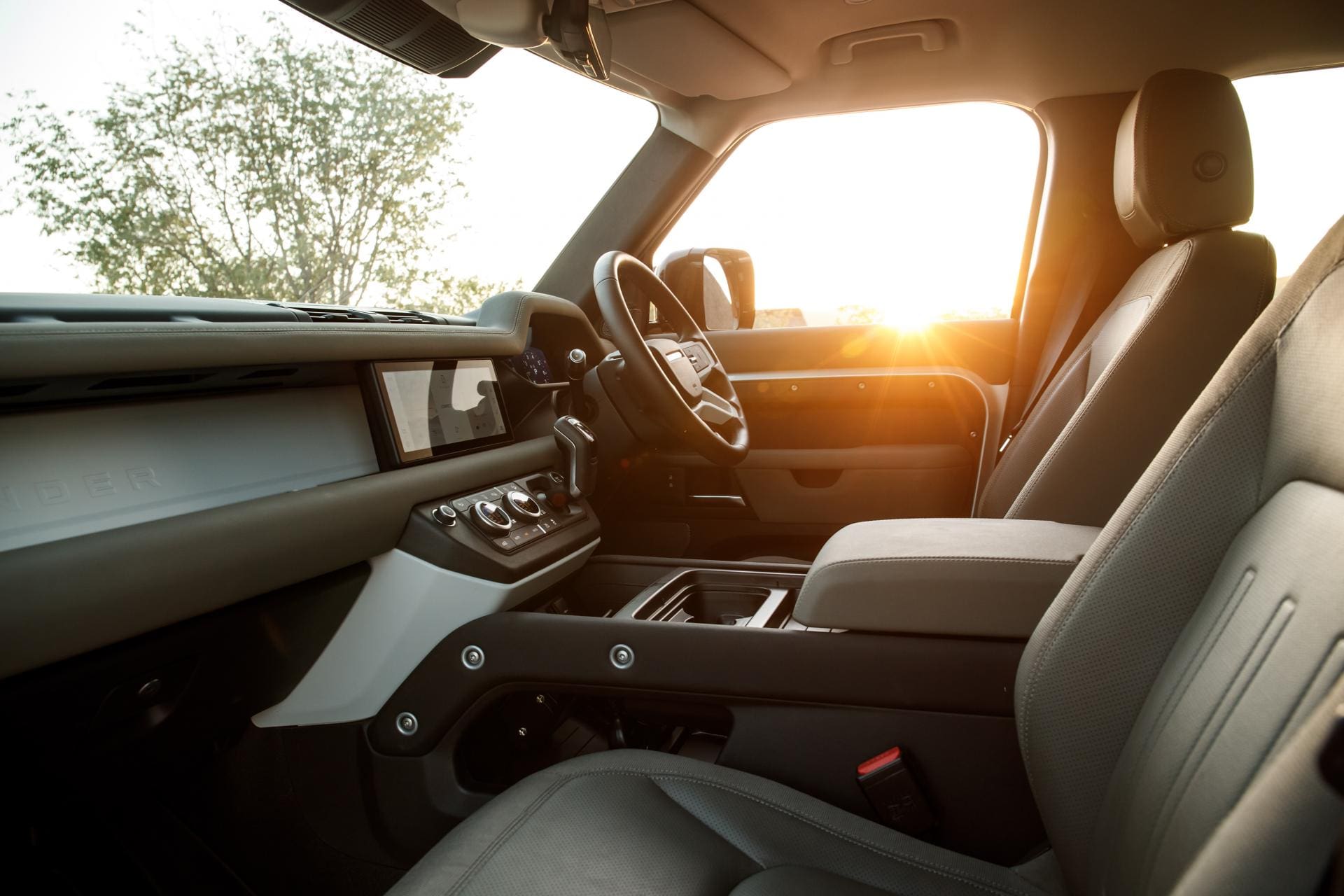
You will want the side-mounted load case, the portable rinse system for washing a muddy dog, the expedition roof rack and obligatory side ladder to pitch a family tent on the South Downs.
The engine line-up will comprise a pair of petrols – the P400 I drove has mild hybrid technology – plus a couple of out-of-favour diesels. A plug-in hybrid and no doubt a full-electric version will be crashing onto the forecourt soon.
All are driven by an eight-speed auto gearbox which is slick and seamless both on and off-road. The gear shifter falls nicely to hand on the dashboard and there’s the option of paddle shift, too. The top-of-the-range 400 model is also rapid, with a 0-60mph time of under six seconds.
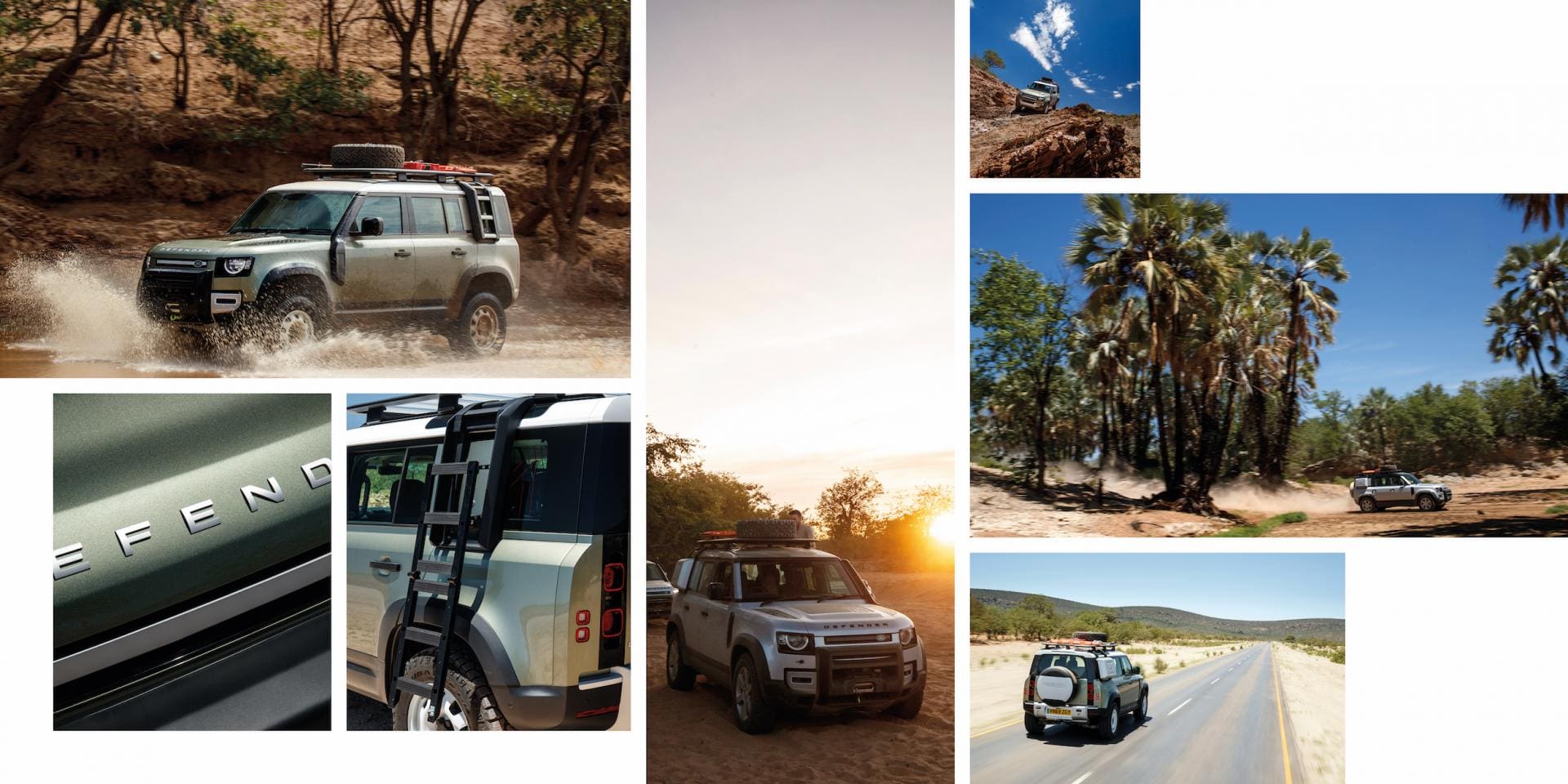
Our expedition tracks within a few miles of the Angolan border, where a long and bitter civil war tore the country apart. Many fled in terror and as we enter the Namib Desert the chassis and bulkhead of a Land Rover Series III left by escaping locals in 1975 litters the roadside. The rest of the vehicle has been picked clean by automotive vultures but guess what – it’s virtually rust free.
The Himba village of Purros is a final stop before a thrilling three-hour drive up the Hoarusib and Gomatum river beds along the Skeleton Coast. Shallow water and deep mud are all that remain of a once raging waterway a few months before. Elephant, Springbok and baboon are plentiful, easy to spot from the Defender’s high Command driving position.
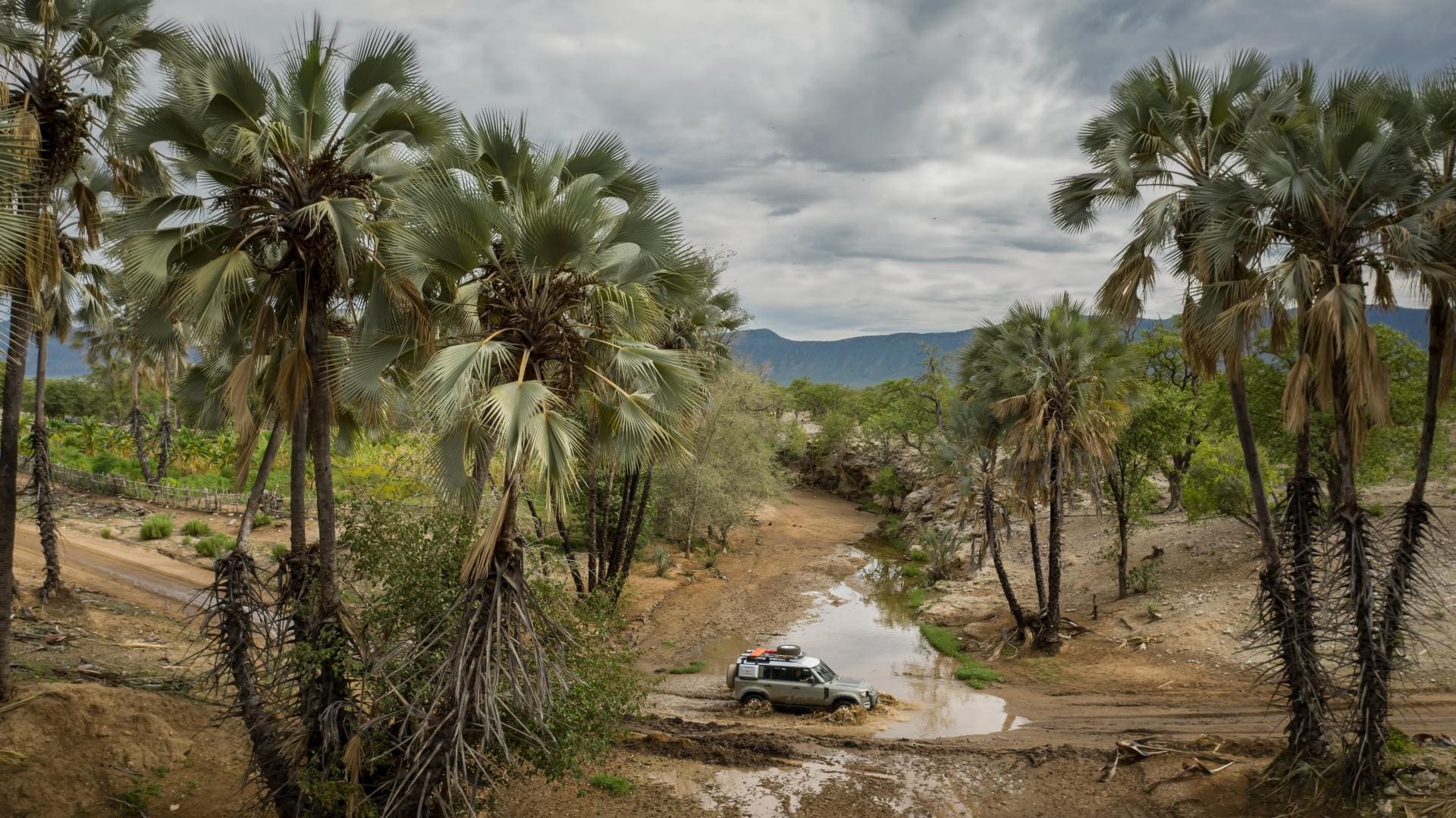

The P400 ploughs ever onward, a raft of technologically-advanced aids inspiring driver confidence at every new challenge. Our three-day trek finally ends back in Opuwo, having scored just four flat tyres and no mechanical breakdowns. Old Defenders would have tackled everything this expedition has thrown at us but the journey would have been longer – and a darn sight more uncomfortable.
Just a 110 five-door model is available at launch before an even more desirable 90 three-door is revealed later this year. Oddly, the coolest versions aren’t sat on shiny alloys – try a set of white, steel wheels for that authentic look.
Like the Range Rover Evoque or Land Rover Discovery Sport, the Defender has morphed into a luxurious and practical machine. Land Rover wants you to fall in love with the new Defender but it will always lack some of the genuine character of the original, a tough act to follow.
And although my Namibia trip proved the new Defender will go anywhere and holds true to Land Rover’s core values, it’s not cheap. Defenders now start at £45,240 (for the diesel D200) before rising to an eye-watering £78,800 for the model I drove, which included £6,000 of extras.
That’s as much as a full-size, luxury Range Rover, so I doubt anybody will be plonking a sheep in the back, or even a muddy dog. But this is a vehicle that genuinely gets under your skin. I can’t help feeling that I’ve witnessed the birth of another Land Rover legend…
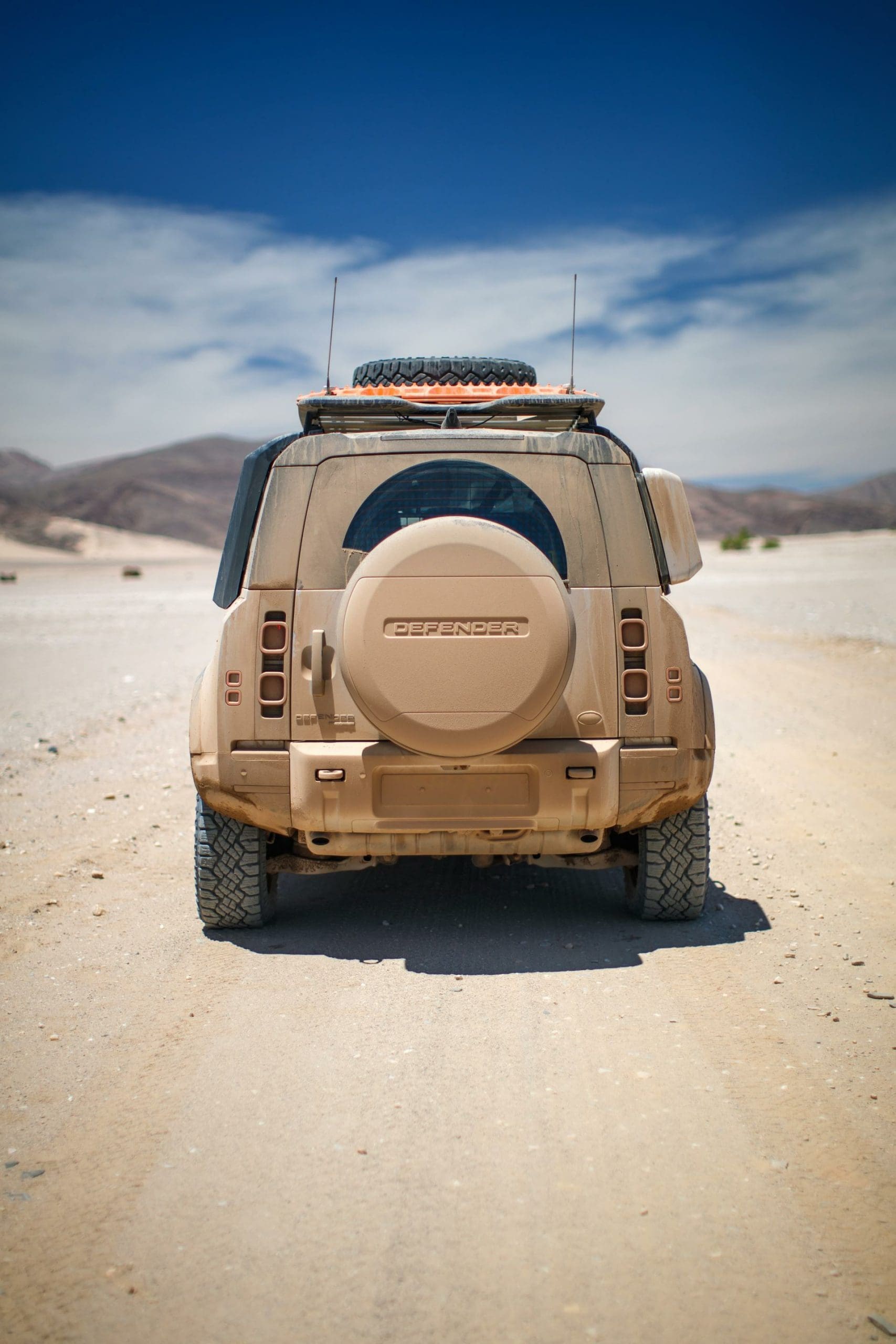
Land Rover Defender 110 P400 MHEV
PRICE from £78,800ENGINE 3.0-litre, 6-cyl petrol mild hybridPOWER 400 PSMAX TORQUE 550 Nm @ 2000rpm0-60 MPH 5.8 secondsMAX SPEED 119 mphFUEL CONSUMPTION 29.4 mpg









